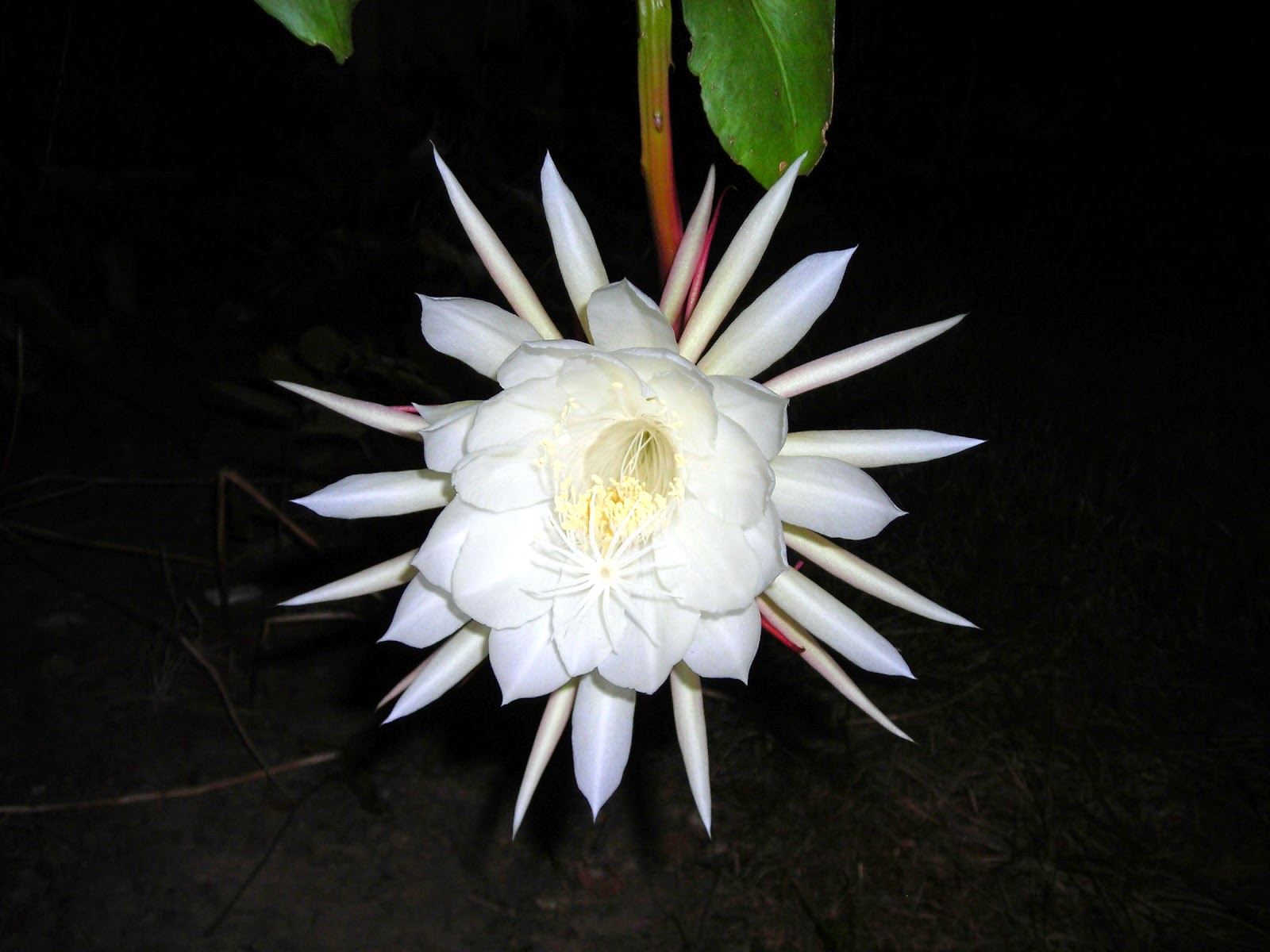The
night-blooming cereus, a kind
of cactus, was a favorite conservatory plant in my grandparents’ generation. While
various plants have been called “night-blooming cereus,” only one kind was
universally adopted among the women of my hometown. It was nicknamed Christ
in the Manger. The popularity of the
plant may have received a boost from the mounting of a special exhibition of
night-blooming cereus at the Columbian Exposition in Chicago in 1893. As many
people from my village traveled to Chicago to participate in the celebration of
Columbus’ discovery of America, they may well have obtained specimens of cereus
that were the ancestors of my plant.
 |
| My Night-Blooming Cereus in Joyous Display |
The flower opens for only one
night, usually after midnight, and the petals are found withered and drooping
by sunrise. I have heard of Victorian families staying awake to watch the
opening of the flowers. A single luxurious plant can have well over a dozen
blooms, but mine has had no more than three at a time.
Long ago, the plant was
considered to have medicinal value. It was mentioned in Joseph H. Wythes’ The Physician’s Dose and Symptom Book
(12th Edition, Philadelphia: Lindsay & Blakiston, 1875). Please
understand that I am not endorsing the medical value of night-blooming cereus
when I quote from The
Pharmacology of the Newer Materia Medica (Detroit: George S.
David, 1889): “Sedative and diuretic; especially useful in functional diseases
of the heart, attended with much irregularity of action, in which it exerts a
decided action, palliating or removing the symptoms and frequently giving
prompt relief. It has been found serviceable in palpitation, angina pectoris,
cardiac neuralgia, rheumatism, valvular disease, also of hemoptysis, dropsy,
and in threatened apoplexy.” The book gives several case studies, including
this one: “Mrs. McSwain, a lady about fifty years of age, nervous temperament,
and formerly of Minnesota, called me in to see her. I found her with violent
palpitation, cold extremities, clammy sweats, and great prostration. I examined
the heart carefully, and found the distinct bellows sound, and rapid pulsations
of an enlarged heart from dilatation. … I prescribed [cereus] in five-drop
doses, every two or three hours, alternated with collinsonia, in doses of ten
drops, three or four times a day. Under this treatment she rapidly improved,
until she regained her health and returned to her home in the northwest.” I
have no idea if the plant had anything to do with the restoration of Mrs.
McSwain’s health, although I am delighted that she recovered from her illness.
I have quoted her case because I find the old-fashioned medical lingo so piquantly
redolent of an earlier era!
You need only a little imagination to perceive the Christian symbolism.
In the center of the plant is the Christ child upon the yellow straw of the
manger. Angels in white raiment have gathered around; above them is the star of
Bethlehem.
I inherited my night-blooming cereus. I have simply watered it for many
years, and it seems happy enough. Websites describe the care and feeding of the
night-blooming cereus, and I direct you to them. Why? Because I really have no
idea how I have prompted my heirloom plant to bloom. It has set on flowers in
some years and not in others. I need to read the websites myself so as to learn
how to encourage my plant to develop blossoms.
I can tell you that the flowers are large and heavy, in a sense. In a
way, it is surprising how they can quickly wilt into lightweight nothingness
after such spectacular blooming. For some, the blossoms may demonstrate a
wistful aphorism such as all good things must come to an end, but I
prefer to think that the flowers are dazzling like sunup dispelling darkness
while anticipating the actual sunrise in all its splendid symbolism; as such,
they are an inspiration!

No comments:
Post a Comment